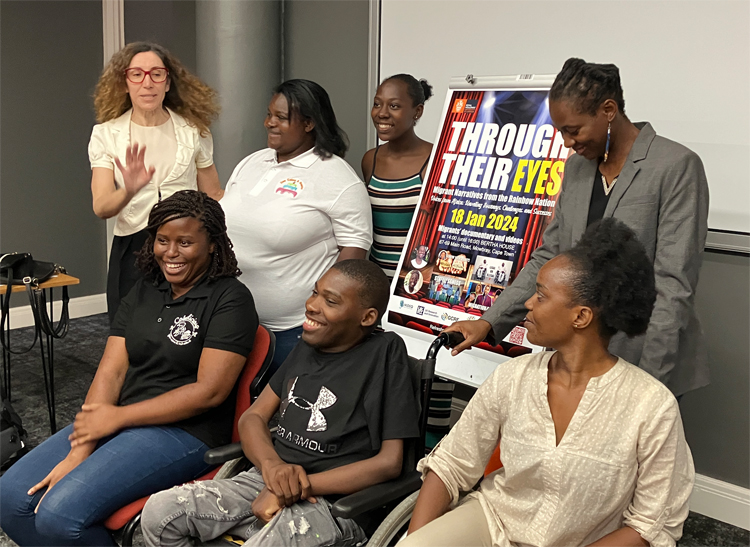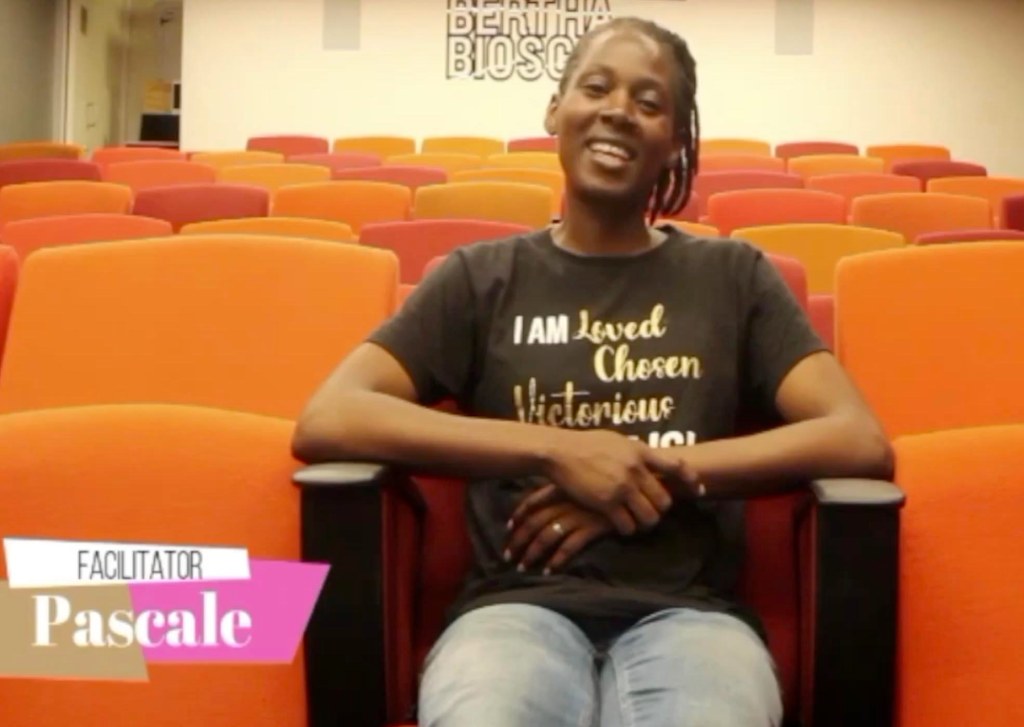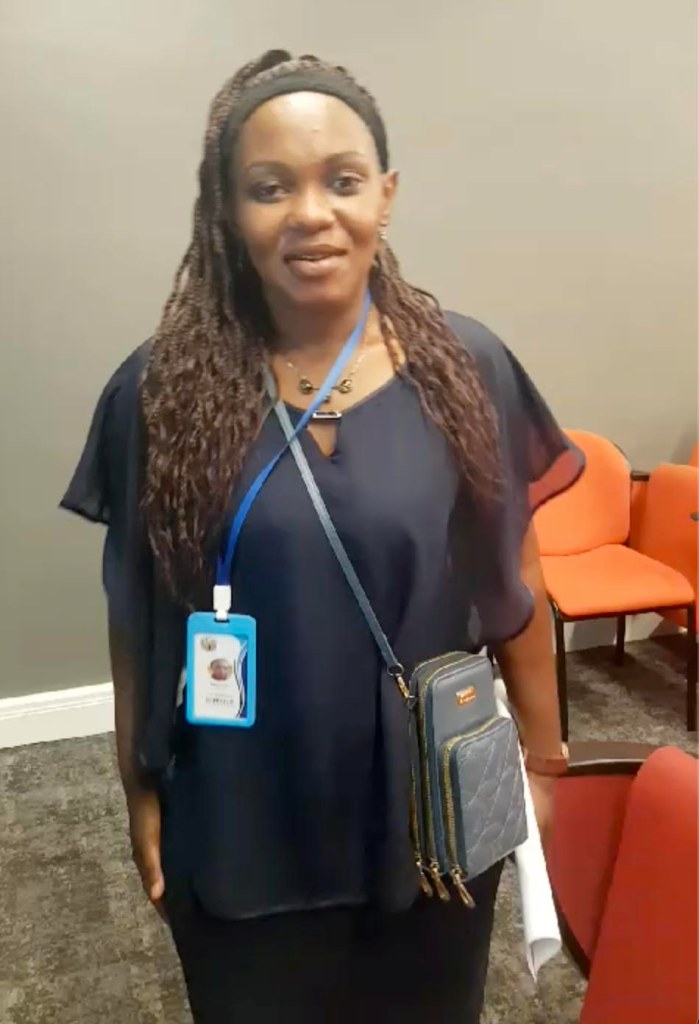By Maria Rosa Lorini
In the final months of our MIDEQ WP9 team’s interventions working with migrants in South Africa, a remarkable phenomenon emerged — a “yeast effect” that represented the catalytic effect of the impact of colaboration between academia, NGOs, migrant communities and individual participants. This effect symbolises the organic growth and replication of positive outcomes, as individuals who were initially trained by our team together with local colleagues and experts became catalysts for change within their own communities and associations.

Adapting and Propagating Learning Materials
One of the cornerstones of our intervention was the adaptation and propagation of learning material used in the initial workshops we organised and ran. Recognizing the importance of tailoring educational resources to local contexts, we worked with local educators and experts and with the initial participants to create relevant learning material on issue relating to the use of digital tech by migrants. A special focus was on security and safety online and on content creation (to see more about our initiative and trainings), ensuring their accessibility and relevance to the communities we and they served.
After a series of workshops run by our team between November 2022 and August 2023, some of the trainees started organising sessions and training people in their own communities. During presentations to different audiences, such as chairmen of migrant associations, women community leaders, NGOs representatives and teenagers, the new trainers further adapted the learning material to suit the specific needs and understandings of each group. All examples were carefully crafted to resonate with the audience and address their concerns, responding to feedback from local stakeholders and demonstrating their commitment to meeting emerging challenges and empowering individuals with relevant skills and knowledge.
Furthermore, the team of trainers began developing new PowerPoint presentations that addressed frequently asked questions and were designed to be engaging and captivating for the public. Some examples of these slides are illustrated below.


From the Power Point Presentation created by the Fusion Avenue team in Johannesburg


From the Power Point Presentation created by the Fusion Avenue team in Cape Town
Targeted Events, Outreach, Collaborations and Partnerships
Our efforts encompassed a diverse range of events such as documentary presentations (see our blog about recent events) and targeting specific groups of stakeholders. From migrants and migrant associations to local communities, international organizations, academics, and media, we engaged with a wide spectrum of audiences to ensure the broad dissemination of knowledge and resources. A key highlight of this part of the intervention was the implementation of peer-to-peer knowledge sharing initiatives. Through video creation and dissemination, as well as face-to-face workshops run by migrants for migrants, we witnessed at first hand the power of community-led education. Individuals who were trained in our initial workshops took on leadership roles, becoming educators and advocates within their own communities. This is how the Fusion Avenue team of trainers presents and sponsors their work to support more organisations and communities:
Central to the success of these interventions was a spirit of collaboration and partnership. We worked closely with local stakeholders such as the Adonis Musati Project, international organizations such as the Scalabrini Centre, academia and research institutes such as SIHMA, and migrant associations such as MAGSA to leverage collective expertise and resources. This collaborative approach not only enhanced the effectiveness of our interventions but also fostered a sense of ownership and created the bases for the continuation and sustainability of the activities within the communities we served. This collaboration of groups from 12 different African countries represents a significant step forward in fostering solidarity and collective action among diverse migrant communities.
Together, they are now working on a common agenda in Johannesburg and Cape Town related to the safe, secure, and wise use of digital technologies, as well as communication skills and changing the narratives around migration. This collaboration represents a significant step forward in fostering solidarity and collective action among diverse migrant communities.
Measuring Impact and Ensuring Sustainability
The impact of the intervention was quantifiable, with hundreds of individuals already having been trained and reached through the different activities convened by the migrants with whom we worked. More than 200 people have been trained during the last 5 months by 12 of the 30 trainees in our original workshops. The rest of the participants are using the acquired skills to get a job and to fulfil their personal aims.
The majority of the activities carried on by the ‘new trainers’ covered more than one 4-hours session with each group of people. This approach ensured sufficient knowledge transmission, not least by allocating enough time to do practical exercises during the session including such things as how to change the settings on personal social media accounts. It also enabled the testing of information reception during the re-cap done by the trainees at the start of every new session.
Every participant completed a feedback form to give back impressions on the quality of the activity and suggestions for improvements. In the case of school teachers, community leaders and representatives of organisations and associations, the learning material was always requested by the trainees so that they could further disseminate the lessons learned (all our materials were created using Creative Commons BY-SA licenses). Some interviews and appreciative letters also witness this commitment. The administrator of the Congolese Society of South Africa Diana Bongongo highlights below what she learned from our trainees – now trainers! – and how she will herself become another yeast of change!
Integration of lessons learned into existing programmes
As part of our commitment to knowledge exchange and continuous improvement, we have shared our journey through a documentary film covering our interventions in South Africa. Additionally, we leveraged social media and collaborated with research hubs and NGOs to disseminate videos created by migrants, ensuring that our learnings reached a wider audience and had a lasting impact. But perhaps more importantly, our focus was on ensuring the continuation of these activities beyond the intervention period. Through partnerships with local stakeholders (including migrant organizations, associations, community leaders, local media companies, and school teachers) and integration of training resources into existing programs, we laid the groundwork for long-term sustainability and community empowerment. Our learning material is for instance now being used by the Scalabrini Centre in Cape Town, which reaches out to 1,500 migrants trained face-to-face yearly. Cape Town TV is also supporting the dissemination of the videos produced as well as the preparation of focused programs on migration.
Additionally, local non-migrant organizations such as Ubuntu Bethu have been instrumental in deploying workshops on digital safety and content creation in marginalized communities where many migrants reside. These partnerships have expanded the reach of our intervention to people living with constraints and limited access to the type of support and trainings offered elsewhere, and provide much needed advice for job search in areas with more than 50% rate unemployment, and for online safety in area of high gender based violence. The new partnerships and collaboration have also sparked further discussions around inequalities faced by migrants in areas affected by severe deprivation for all residents, furthering our collective efforts for social change.
In conclusion, the yeast effect of our intervention exemplifies the transformative potential of collaborative efforts in uplifting migrants and the wider communities in which they live. By harnessing the power of community engagement, peer-to-peer learning, and targeted outreach, we not only empowered individuals but also laid the foundation for sustainable change that will continue to flourish long after the intervention has ended.


